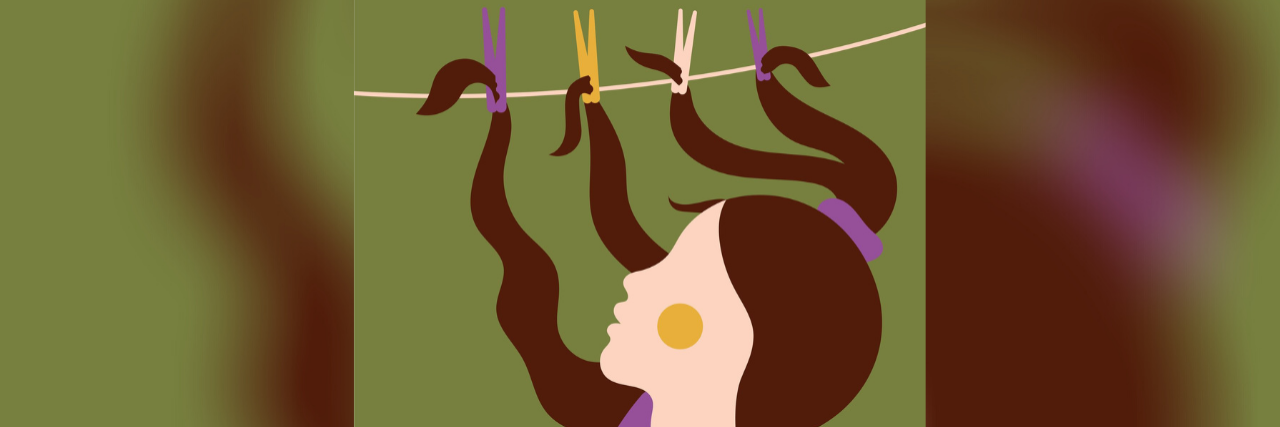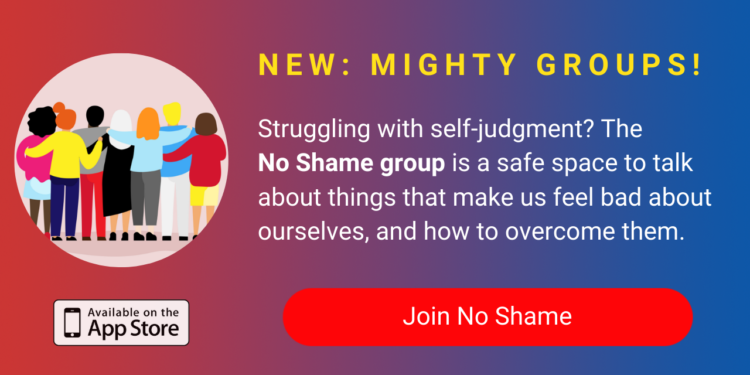How Perfectionism Plays a Role in My Trichotillomania
Reading wasn’t my thing. After scoring one point below average on the comprehension section of my elementary school state test, my parents and teachers enrolled me in a supplementary support class. Every morning I’d practice with students learning English as a second language. I could tell you every detail of a story, but I always seemed to miss the main point. The only thing I learned was that average isn’t good enough.
I remember selecting a book from our sixth grade summer reading list. As I read and tried convincing myself that I could, I rubbed my brow and grew concerned I couldn’t. Somehow, stroking my eyebrows was soothing. It got me through that book and many assignments to come. That’s when I began to pull out my hair. I was 11 years old.
You see, I am a perfectionist. I’ve been described as an overachiever, people pleaser and probably my least favorite—a worrywart. Nervous Nelly, maybe, but who wants to be a wart?
Growing up, nearly every page of my textbooks would glow a bright highlighter yellow, because everything was important. You could bet that each piece of artwork showcased on the fridge was a fifth draft. I carried around a six-inch eraser that said “For BIG Mistakes.” I’d focus for hours and need reminders to stop and eat. I wouldn’t drink water throughout the day, because I was nervous I’d miss something in class if I had to excuse myself to use the bathroom. I earned my school’s perfect attendance award every year, and was named “most likely to succeed” in our middle school yearbook. I was a competitive gymnast and dancer, too. My life inside and outside of the classroom was about discipline, precision and performance.
The more pressure I put on myself, the less eyebrow hairs I had. By eighth grade, in just two years, both my eyebrows and self-esteem were nonexistent.
Tired of justifying what people saw when they asked me what happened to my face, I started high school hiding behind makeup. After wrapping Band-Aids around my thumbs, I spent an hour each morning with my angled eyebrow brush. I’d make faces in the mirror to check for symmetry, until (of course) they looked perfect. Between classes I’d run to the nearest bathroom stall, grab my purple pocket mirror from my purse, and make sure my eyebrows were still there. I was afraid I’d accidentally wipe them off or actually be human and sweat. I kept my head down when I walked between school buildings in the rain. Water was an enemy. No more swimming or sunny, barefaced beach days. No more sleeping during sleepovers either. I couldn’t risk my eyebrows ending up on my pillow overnight.
I couldn’t stop pulling. When friends and family would bring it to my attention I’d feel mostly embarrassed, somewhat glad they cared, and a little resentful of the constant reminders to just stop or sit on my hands—as if it were that easy. I pulled when I was bored, and I pulled when I was stressed. So I pulled all the time.
Little hairs would be scattered about my test papers like sprinkles. Sometimes I’d brush them away because I couldn’t bear the sight of what I was doing to myself, and sometimes I’d keep them there, staring back at me, to guilt myself into stopping. I even tried giving up pulling for Lent. I thought maybe I’d be more accountable if I made a sacrifice to God. When I failed, my shame grew.
It wasn’t until 10 years later that I studied neuroscience in college and learned there was a name for my experience. It wasn’t a bad habit or lack of will power at all. It was trichotillomania.
Trichotillomania is a disorder that involves body-focused repetitive behavior; that is, recurrent and irresistible urges to pull body hair. I conceptualize the disorder as a relative of the obsessive-compulsive disorders and a child of the anxiety disorders.
While I continue to struggle with perfectionism, anxiety and the urge to pull, I have been empowered by psychoeducation and treatment. Fifteen years and countless approaches later, I have found what we call replacement behaviors most helpful. Embroidery has creatively shifted my relationship with my diagnosis. Now I occupy my fingers with needle and thread and pull to detail designs I’m proud to show.
I am a licensed mental health therapist who sees a therapist. It’s about time I’ve shared my story. To the one of 50 who experience it with me: Trich may be relatively unknown, but you are not alone.
Image by Cecilia Castelli Illustrations


